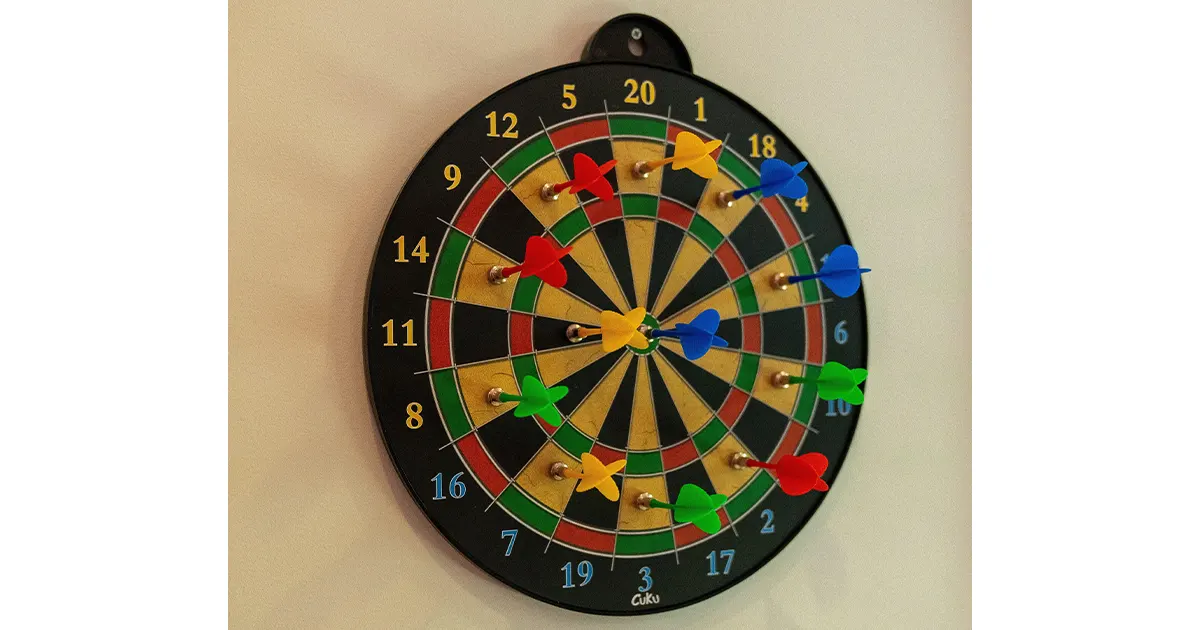As a sales expert, it may not be surprising for you to know that warm leads have a 14.6% close rate while it is just 1.7% for cold leads! Doesn’t that make warm leads worth focusing on? Yes, it does, but classifying leads into cold, warm and hot is more important. Is your business presently facing a slump due to poor lead classification? We completely agree that being unable to differentiate the leads can cause a lot of difficulties. However, you’re not alone in this. We’ve created an entire series – cold vs warm vs hot sales leads to help you move ahead smoothly.
So, just keep on reading and you’ll be sorted in no time. But before getting into the core of sales leads let’s brush up the basics…
Table of Contents
- What are Sales Leads?
- Different Types of Leads in Sales
- Cold Sales Leads
- Warm Sales Leads
- Hot Sales Leads
- Cold vs Warm vs Hot Sales Leads
- How To Qualify Leads Using The BANT Method?
- How to Identify and Market Different Leads?
- Benefits of Targeting Different Types of Leads
- What to Do when a Warm or Hot Lead Grows Cold?
- How to Prevent a Warm Lead from Growing Cold?
- Tips to Increase Close Rates for Cold Prospects
- FAQs
What Are Sales Leads?
Let’s begin with what a lead is. A lead is an individual who has not bought your product or service yet but whose contact details you have.
A lead also refers to an individual at the top of the sales funnel or one on the final stage of the journey who is willing to purchase. Understanding the difference between the two is essential. You have to handle leads who are almost ready to make a purchase differently from those who don’t even know about your product or service. It simply means that not all leads are the same.
Different Types Of Sales Leads
Cold Sales Leads
So, what is cold lead?
Cold leads are individuals or organizations with very little or no interest in your brand. There are chances of them not being aware of your brand. You must have found their contact details online or made a first-level contact with them, and these individuals don’t know about you and your offerings.
In addition, you have to nurture cold leads carefully, and it will be a time-consuming task for you to close a deal with them.
Warm Sales Leads
So, what is a warm lead in sales?
A warm lead is an individual or organization with a pre-existing interest in your products or services. You can see their interest in you when they follow your social media handles, subscribe to your newsletter, fill up contact forms, etc. Warm leads are those who wish to know more about what you have to offer and are more likely to convert. However, you have to nurture warm leads as well to close deals.
Hot Sales Leads
What is a hot lead?
A hot lead is an individual who matches your ICP ( ideal client profile) and is highly interested in purchasing your product or service. These leads are also known as qualified leads, and they are the best category of leads as the chances of them patronizing your brand are higher.
Are you getting an idea about the difference between leads?
Consider this, you run a car showroom, and a person visits your showroom and gives his contact details. Calling him would be more fruitful as he is more likely to purchase a car from you than reaching out to someone from the phone book. That is why it is better to pay more attention to leads who have shown interest in your product or service.
Cold vs Warm vs Hot Sales Leads
Following is the table with the comparison between Cold vs Warm vs Hot Sales Leads.

Hopefully, the difference between Cold vs Warm vs Hot Sales Leads is clear now.
Cold vs Warm vs Hot Sales Leads – How To Qualify Leads Using The BANT Method?
BANT is a helpful sales methodology to qualify leads. It forms a central part of the sales process that helps find out whether a prospect is a good fit for your solution or not. If the prospect is not a good fit, you can disqualify them.
BANT has been around for some time now and is also reasonably practical and relevant to many different products and sales processes.
BANT stands for Budget, Authority, Need, and Timeline.
Budget – The amount the prospect is ready to spend or is willing to spend on your product or solution.
Authority – Who is the decision-maker in the organization?
Need – Does the prospect need your solution?
Timeline – The time required for the prospect to decide on making the purchase.
Here’s how you can use the BANT framework,
1. Understand the prospect’s budget
Most B2B solutions on a subscription model have wide pricing. The prospect can choose a plan that suits their needs and budget. Also, asking the prospect what they expect from your offering can clear the price factor.
2. Identify the decision-makers
It usually takes three stakeholders to finalize a purchase in an organization, and you have to convince all of them. Find out who all are involved in the sales process and how you can reach out to them.
3. Figure out the importance of the problem
You have to ask yourself whether the prospect is keen on solving the problem or not and find out the prospect’s needs.
4. Create a timeline for the deal
Determine how fast the prospect’s organization can make a decision. Is the deal going to take months, or will close quickly? Doing so would help you prepare for it.
5. Be in the know through different channels
This is a crucial step to help you address the concerns and deal with the prospects’ objections. Try following your prospects on social media, attending events and signing up for their newsletter. It is like being aware of what is going on, and you can gather enough information to qualify the prospect.
If you are using BANT for the first time, you will be pleasantly surprised by its results. It will help you close more deals successfully.
Benefits of Targeting Different Types of Leads – Cold vs Warm vs Hot Sales Leads

Cold leads
Even though the conversion rate of cold leads is low, here are a few benefits of targeting them,
a. They are easy to acquire as getting lists of cold leads from B2B lead generation firms is not challenging.
b. Outsourcing the lead generation task can help you focus on sales activities that contribute to your company’s success.
c. Cold leads are easy to target as you don’t have to look at prospect history to reach out to them. You only need to send an email or make a phone call in the initial step.
Warm leads
Here are the benefits of targeting warm leads,
a. They have higher conversion rates than cold leads due to their prior interest in your product or service.
b. It is easy to begin a dialogue with them and push them ahead in the sales funnel.
c. You can get in touch with them to understand their unique needs and pitch your product or service.
Hot leads
The main benefit of targeting hot leads is that they are the leads that have the highest conversion rates. They may not be as many as cold and warm leads, but they have the highest chance of closing a sale. That is ultimately what you want as a salesperson.
So, you just saw cold leads vs warm leads vs hot leads.
What To Do When a Warm or Hot Lead Grows Cold?

Here’s a list of what you can do to revive warm or hot leads,
1. Email them specifically
Try to group the leads that have turned cold and send them emails asking them why they lost interest. Use subject lines that rekindle their interest in your product or service. You can use a free subject line generator for this purpose.
2. Keep them in the know
You can revive the leads that have turned cold by sending them emails about new launches, fresh pricing, and new features. Try to create a sense of excitement by putting your creative foot forward so that the cold leads turn warm.
3. Try using different channels
Instead of calling and emailing, it is better to search for other channels to engage leads. The point is to avoid annoying the lead in any manner. Multiple outreach channels would also help to bring in an element of freshness in the way you reach out to them.
How To Prevent A Warm Lead From Going Cold?

Here are a few tactics that keep warm leads from going cold,
1. Be in touch with your lead
You have to please your lead and stay in touch with them. Doing so will ensure that your leads don’t go to your competitors. Keep your approach positive and friendly while showing that you understand the leads’ challenges.
2. Have a purpose to follow up
It is better to follow up with the lead an optimum number of times, not too many and not too few. Also, focus on the purpose of sending emails. It can be about informing about new offers, launches, features, company updates, or sending congratulatory messages for achievements and wishes for special days.
3. Keep the timing right
Try to find the best time to reach out to leads i.e. when they are most likely to read them. Similarly, you should call people when they are free to speak to you with phone outreach. If you disturb them in the middle of something, you won’t get a positive response which will halt your sales process.
4. Automate email campaigns
Using sales automation tools will be of immense help to you as a salesperson. They will reduce your manual work to a great extent by automating your email campaigns.
Tips To Increase Close Rate For Cold Prospects

Cold leads are difficult to convert because they don’t know about you and your solution. You have to build a rapport with them and build trust. Also, try to show them how you can fix their problems. Here’s how you can do so,
1. Provide social proof
When you provide social proof in your email to cold leads, you show them that you have already helped other customers achieve their goals. This will make you look more credible. The best social proof you can present includes customer testimonials and case studies. Leads would give your solution a try when they know that others got results.
2. Build a relationship
Cold leads require nurturing from your end. After your initial email, you should call to discuss your product or service in detail. Give the leads a demo for them to understand the solution thoroughly as it is the right chance to build a deeper relationship with them.
Charge Yourself Up to Handle Cold vs Warm vs Hot Sales Leads
By now you know that handling each lead differently is the mantra to success. Try implementing our suggestions and watch your business soar! If you are still unsure about differentiating leads and waiting for your superhero to rescue you, think of us; we are always there at your disposal.
FAQs
Cold leads are individuals or organizations who have very little or no interest in your brand. Chances of them not being aware of your brand are also there. You must have found their contact details online
A warm lead is an individual or organization with a pre-existing interest in your products or services. They usually follow your social media handles, subscribe to your newsletter, fill up contact forms, etc.
A hot lead is an individual who matches your ICP or ideal client profile and is highly interested in purchasing your product or service. These leads are also known as qualified leads.

Leave a Reply